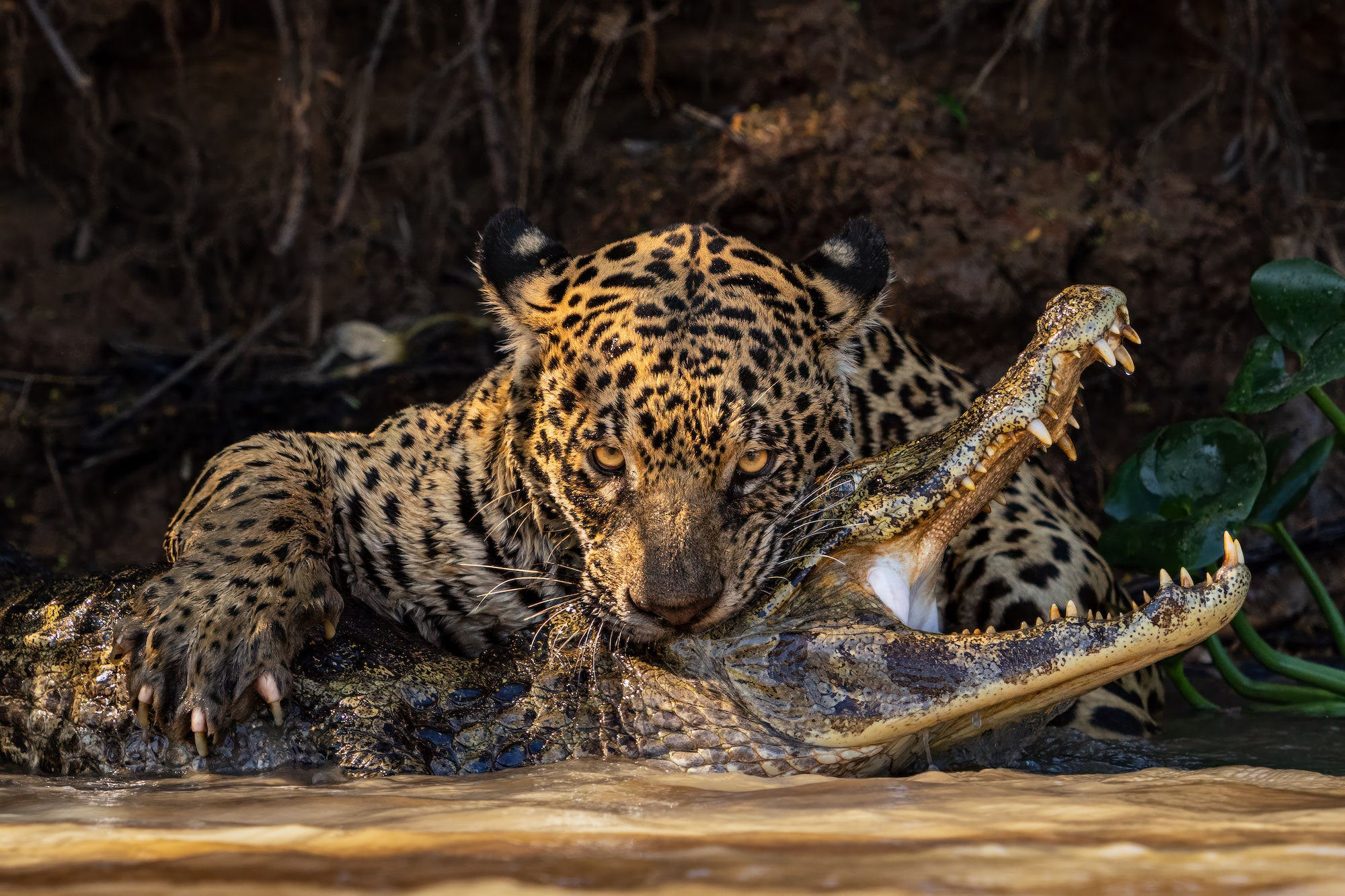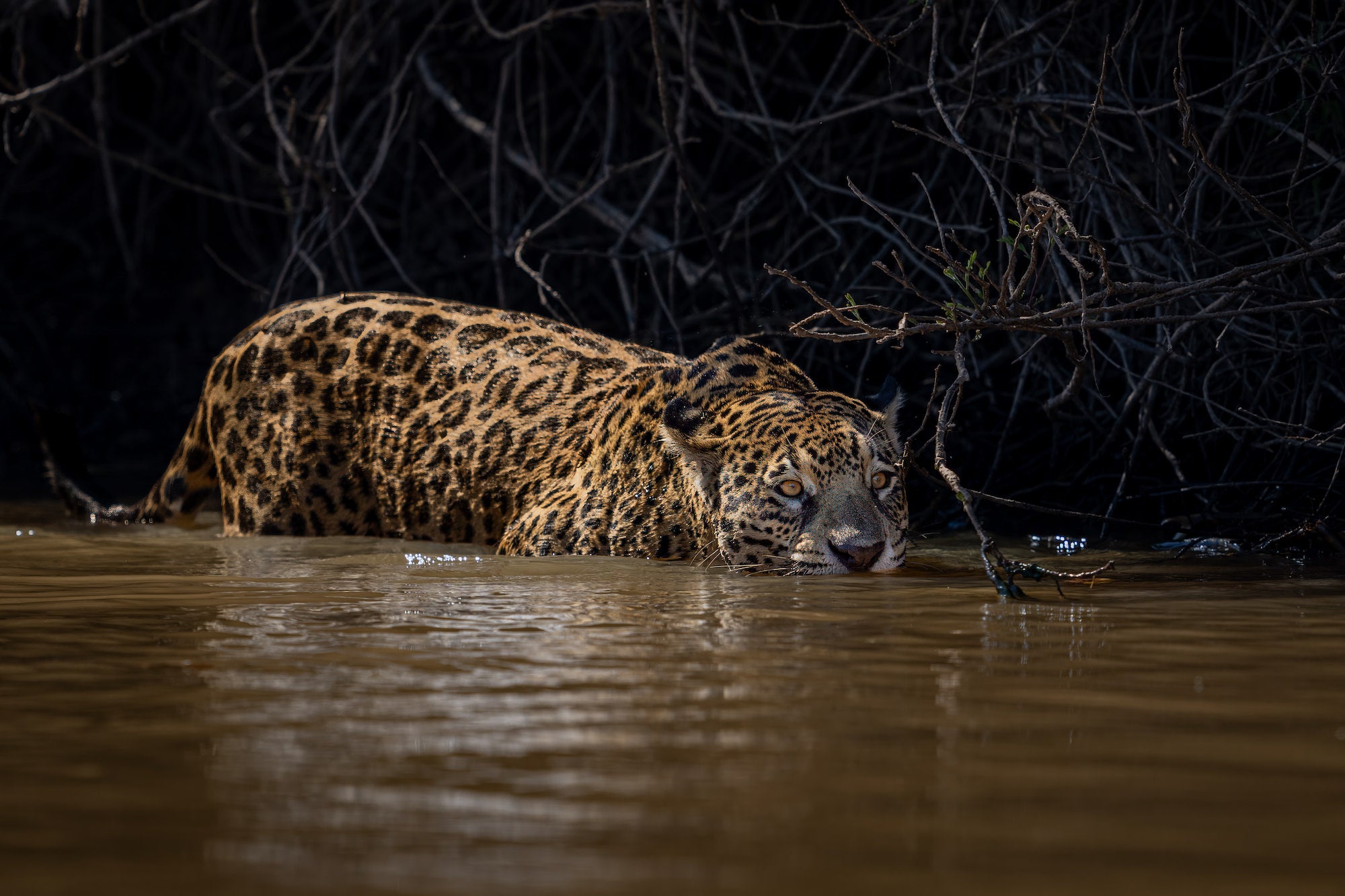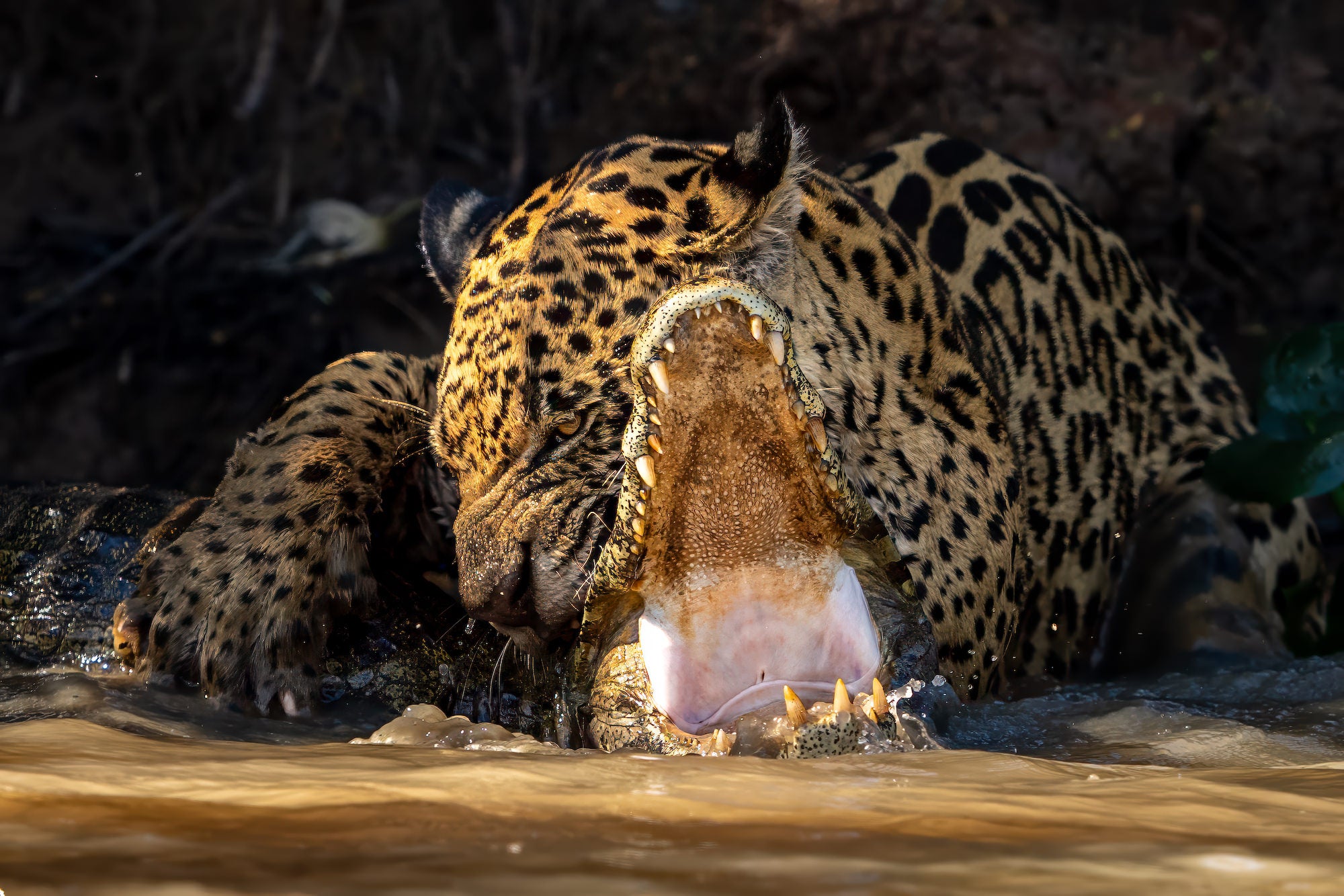When he's not taking photographs, Ian Ford (@ianhford) runs a travel agency in the UK. That has allowed him to explore a wide range of landscapes and encounter wildlife across the globe. “My focus is on wildlife photography, capturing everything from iconic land animals to the wonders of the underwater world," he explains. "Through this image and my work as a wildlife photographer, I aim to highlight the critical need for conservation. Each photograph serves as both a reminder of the beauty we must protect and a call to action to safeguard these fragile ecosystems for future generations. My hope is that people not only appreciate the beauty of the natural world but also understand its vulnerability and feel inspired to take responsibility for preserving it.” We had to learn more about this rare moment Ford captured of a jaguar biting down on an unsuspecting caiman with his Sony Alpha wildlife setup. Keep reading for his story behind the shot, an image that was Highly Commended in the 2024 Wildlife Photographer of the Year contest produced by Natural History Museum in London. The full list of winners will be announced in October.
Product Preview – In This Article You’ll Find:
–Sony Alpha 1
–Sony 400mm f/2.8 G Master

Photo by Ian Ford. Sony Alpha 1. Sony 400mm f/2.8 G Master. 1/800-sec., f/4, ISO 400
A Rare & Powerful Scene
At dawn on my final day in the Pantanal region of Brazil, I set out from the hotel on the São Lourenço River, hoping to spot a jaguar. After spending the morning searching the river and its tributaries with no sightings, I was just about to return when a call came through—a jaguar had been spotted 30 minutes away, hunting along the riverbank. We rushed to the scene, and there she was—a female jaguar stealthily moving along the water’s edge.
The atmosphere was electric as boats jockeyed for position, all eyes fixed on the jaguar as she silently stalked through the undergrowth. Then, without warning, she pounced, seizing an unsuspecting caiman in her powerful jaws. Luckily, my boat was in the perfect position, and I had my camera ready to capture this dramatic moment. While I hadn’t planned for this exact shot, I knew the Pantanal always held the possibility of something extraordinary. I had traveled there specifically in hopes of photographing jaguars, but I knew the odds of witnessing such an event were slim. The experience on that final morning exceeded all expectations, and I was fortunate to capture such a powerful scene.

Photo by Ian Ford. Sony Alpha 1. Sony 400mm f/2.8 G Master. 1/1250-sec., f/4, ISO 250
The Perfect Setup For Split-Second Moments
For this shot, I used the Sony Alpha 1 with the Sony 400mm f/2.8 G Master lens to take full advantage of the Sony Alpha 1's incredible dynamic range and high resolution, preserving details in both the highlights and shadows. I set the aperture to f/4 to keep both the jaguar and caiman in focus, while the wide aperture helped freeze the action and maintain a low ISO for a clean, noise-free image. This setup offered the perfect combination of flexibility and precision, allowing me to capture the shot in rapidly changing conditions.

Photo by Ian Ford. Sony Alpha 1. Sony 400mm f/2.8 G Master. 1/800-sec., f/4, ISO 400
The Sony Alpha 1's advanced autofocus system tracked the moving jaguar with pinpoint accuracy, which was essential for such a fast-paced scene. I also set the camera to high-speed burst mode at 20 fps, ensuring I didn’t miss any critical moments. The Sony Alpha 1 allowed me to capture that stunning detail and gave me the flexibility to crop in post-processing, while the f/4 aperture of the Sony 400mm f/2.8 G Master lens delivered beautiful background blur, perfectly isolating my subject even in difficult lighting. This combination of speed, precision, and optical quality is my go-to for wildlife and action photography, especially when both detail and timing are crucial.
Photographing The Deadly Bite
For the jaguar and caiman shot in the Pantanal, I set my shutter speed to 1/800-sec. and the aperture to f/4. I always shoot in manual mode with auto ISO, which allows me to adjust my exposure quickly without needing to change all the settings manually—a crucial advantage when photographing fast-moving wildlife, where time is often limited. At f/4, the Sony 400mm f/2.8 G Master lens kept both the jaguar and caiman in focus from my distance, while letting in plenty of light and delivering sharpness on the jaguar, with a beautifully blurred background.
The high dynamic range of my camera helped preserve details in both the shadows and highlights, which was essential given the harsh midday light. The jaguar was moving between patches of light and shade along the riverbank, and when she pounced, the action took place in a tricky mix of sunlight on the water and shade behind her on the riverbank. I was lying low in the hull of a narrow boat, shooting handheld to get eye level with the subjects. The boats are relatively stable, which allowed me to use a slower shutter speed of 1/800, keeping the ISO at a manageable 400. There were about a dozen boats filled with photographers at the scene, but I noticed that most of them were sitting in their chairs at a higher angle. I knew getting lower would provide a much better perspective for this shot, and it made all the difference.
The Edit
For this image, I used Lightroom for minimal post-processing, as the Wildlife Photographer of the Year competition emphasizes authenticity. My main focus was on basic adjustments—such as exposure and contrast—to ensure the image was well-balanced without altering the natural scene. I carefully adjusted the highlights and shadows to recover any lost detail, particularly in the jaguar’s fur and the caiman’s scales, but avoided any heavy edits. I also used a crop to improve the composition, ensuring the integrity of the moment remained intact.
See more of Ian Ford’s work on Instagram @ianhford and check out prints on his website ianfordphotography.com.

















